Comics and Sequenti-Hell Art

Is there a more perfectly suited holiday to comics than Halloween? The costumes, the supernatural, the treats, the threat of childhood nostalgia, it’s all there! In recent years, I have begun tailoring my reading for the season. Summer is invariably when I read the least, busy as I am being out in the world. Fall and Winter by contrast, are the seasons when I get most of the deep heavy reading done in my life. October specifically is usually given over to graphic fiction of the spookier variety. A few years ago I completed a reread of Mike Mignola’s Hellboy, last year I pulled out more cosmic horror, and this year I have put together a collection of comics spanning the theme of “Halloween.”
Beginning with this issue of the newsletter, there is a tag in bigcartel that corresponds to the title up top. Anything in this tag gets 10% off with the code “SPOOKY” from now until November 15th (when my next issue sends out). This code is exclusive for YOU the readers of this newsletter, so nice work on that one.
This month I spend a good amount of time on a certain issue of The Simpson’s Treehouse of Horror and the revival of a pulp title for an anthology of one of my favorite characters. I use this as an excuse to ruminate on the place of anthologies in the canon of comics and the different reasons why anthologies exist. As always, the books discussed here are a small fraction of what is available in the shop, so please click through to check everything out. Without further ado, let’s dig in.
While the origins of comics as a medium are endlessly debated, the practice of compiling multiple comic strips between two covers with a spine into a comic book is traceable to the turn of the 20th century, even though there is of course debate around who was first to do it then as well. For our purposes it is enough to agree that anthologies have been a crucial component of comic books for a very very long time. In fact, anthologies never go out of style and are frequently the site of future innovation in comics. Look at EC in the 1950s, where a studio system overseen by William Gaines delivered innovative work monthly within the pages of Weird Science, Tales from the Crypt, and later Mad Magazine. B. Krigstein’s “The Master Race,” one of the most important comics ever made was conceived for and ran in the first issue of Impact, another EC anthology. The underground cartoonists kept the anthology alive in the 1960s and 70s with numerous titles including Skull Comics, Weirdo and Wimmen’s Comix. The 1980s saw a high watermark in the genre with Françoise Mouly and Art Spiegelman’s RAW Magazine, a title that gave us not only Maus, but also the formalist masterpiece (and soon to be Oscar bait film) Here. Anthologies persisted through the troubled 1990s, again frequently championed by independent publishers and artists. Dark Horse Presents enjoyed a long run throughout the decade alongside it’s euro comics sibling Cheval Noir, while up north Drawn and Quarterly put out several issues of an anthology under the same name. And Jordan Crane began publishing his anthology Non (more on him below).1 Throughout the history of comics, and regardless of editorial or market vision, anthologies are consistently the proving ground for exciting work that pushes the medium forward.
It was also in the 1990s that The Simpsons became a true phenomenon, allowing their creator Matt Groening to realize his comic nerd dreams and begin publishing comics himself. Any book from the regular Bongo line is worth taking a look at because they so frequently conceal formal experimentation under the sheen of a house style, but Groening’s editorial ambition really shined with the Zongo line (publishing important work by Mary Fleener and Gary Panter), and in the annual Halloween special, The Simpson’s Treehouse of Horror.

Much like the TV show episodes of the same name, Treehouse was (you guessed it) an anthology, though each issue of the comic featured a rotating, evolving roster of the premier alternative comics talent of the moment. Issue 15 is arguably the apotheosis of this format due to the influence of its guest editor Sammy Harkham. Harkham, for better or worse, is responsible for some of the best, most influential comics anthologies of the past two decades. The first issue of his semi-yearly anthology Kramers Ergot was published in 2000, but the arrival of issue 4 in 2004 is what is considered the “watershed moment” for Harkham and the anthology itself.2 Kramers constantly shifted content, format, and publisher from issue to issue, but no matter the form, the series was reliably a very special mix of the hippest up and coming talents, established classics, and unexpected reevaluations. Perhaps because of its constantly shifting format, there are several ‘lost’ issues of Kramers Ergot— publications that feature a similar editorial role for Harkham and a familiar cast of contributors. The recent free issue of Los Angeles Times is one such example. This Treehouse of Horror is another.

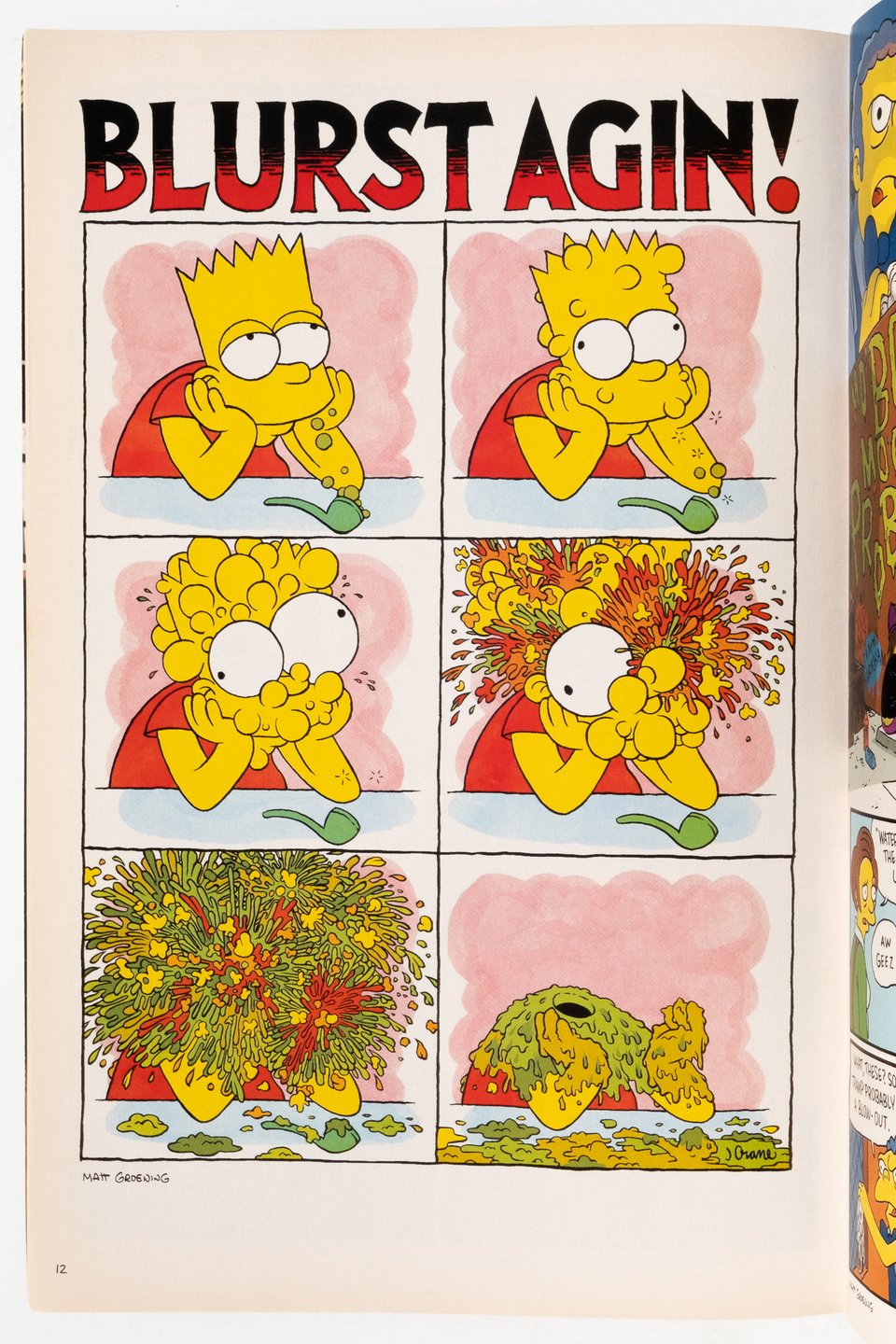
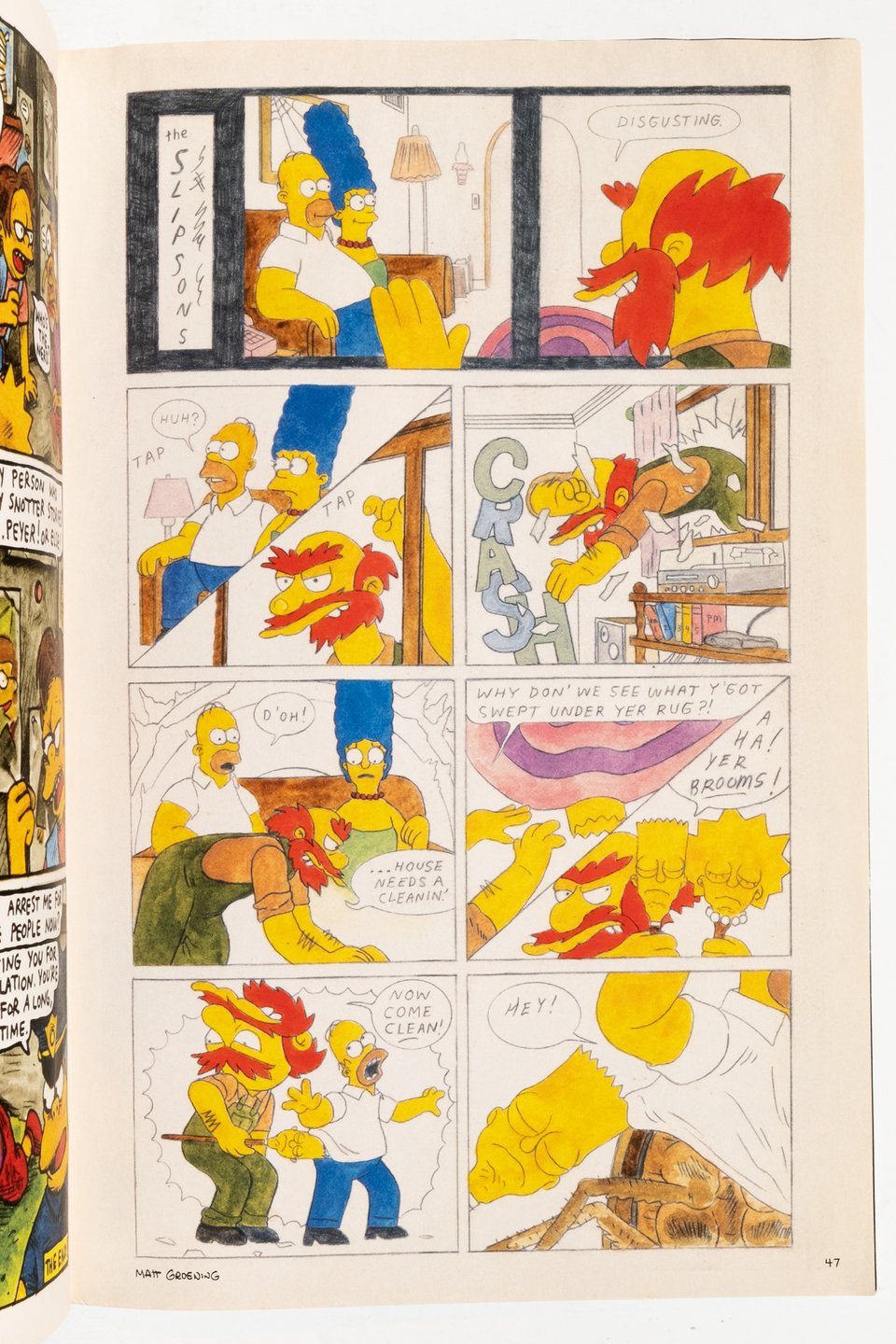
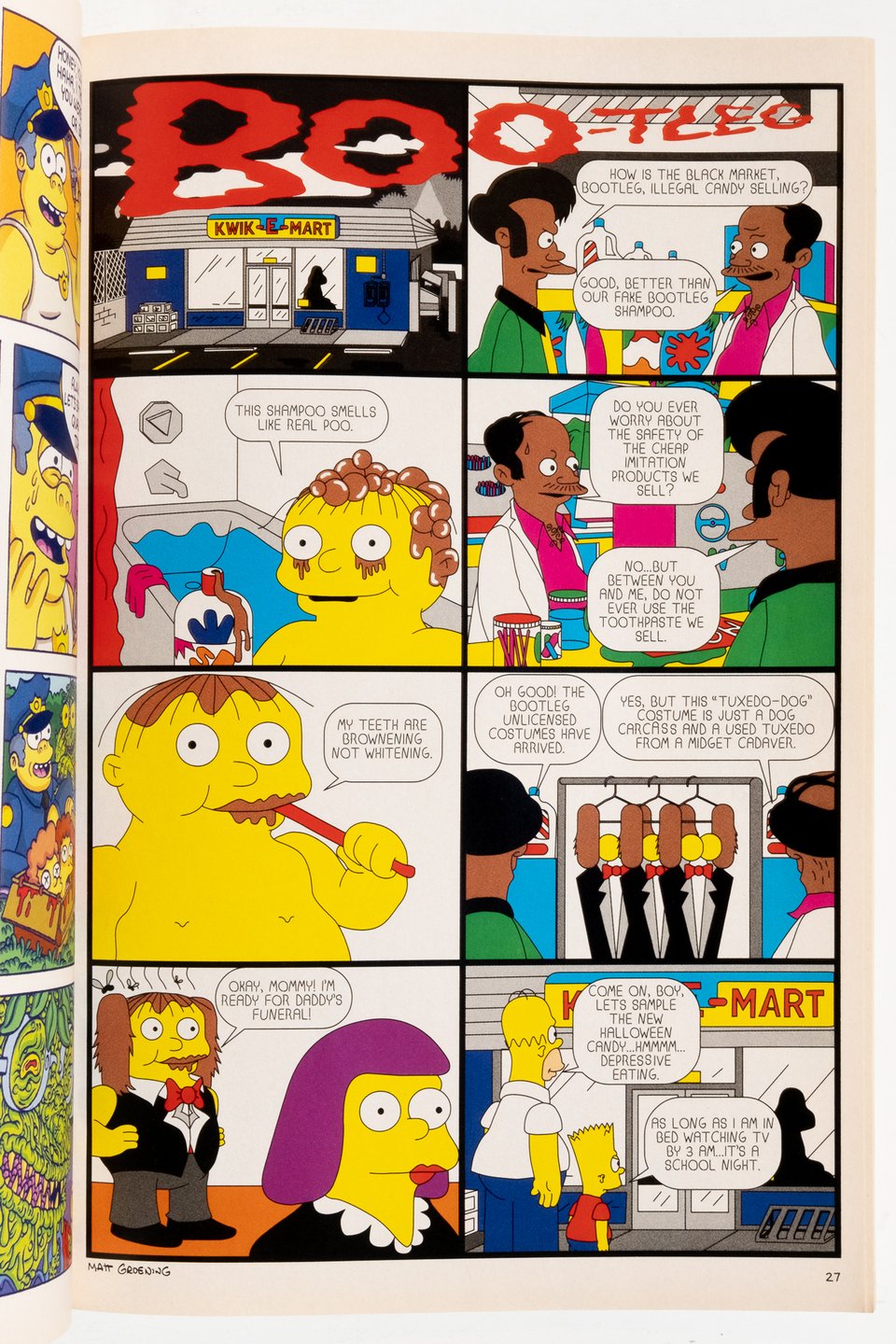
There is, of course, a lot of great comics in this very slim volume. I am a huge mark for anything by CF, so that is an easy favorite of mine, but the centerpiece of the issue is unquestionably “Bootleg” by Ben Jones. Not only is it the longest piece in the issue, it is also the one that manages to thread all the requisite needles the best of any contributor. That is to say that, Jones clearly made a Jones comic in his particular style. It’s also clearly a Treehouse story, and it plays on the bootleg Bart Phenomenon ten years before bootlegs became cool in the mainstream.


Unfortunately, this issue has been through the wringer. It appears as though the book suffered water damage at some point though that is not apparent when reading the book. I see no sign of staining or even stiffness in the pages. In all respects it handles just as well as any other comic.
Hellboy: Weird Tales is an anthology title published by Dark Horse to fill a gap in new Hellboy material while Mignola worked in Prague on the first film adaptation. This places the eight issue anthology series in a timespan from 2003 to early 2004, roughly the same time period as Harkham’s breakthrough moment with Kramers Ergot issue 4.

The two books could not be more different. They are fundamentally distinct ways of thinking about the medium, with Mignola and the Dark Horse crew maintaining the old standards and Harkham et al embracing the avant-garde. This is obvious even from the names of the two anthologies. Weird Tales as a title was licensed by Dark Horse in homage to the pulp magazine roots of comic books whereas Kramers Ergot dropped the apostrophe from the title “because it didn’t look as good visually.”3
Nevertheless, I love both comics. Weird Tales pulled some serious talent, including (but not limited to): Gene Colan, Jason Pearson, P. Craig Russel, Bob Fingerman, and Jill Thompson among many others. But all of that is rendered virtually irrelevant by Roger Langridge’s perfect cartooning in issue 4
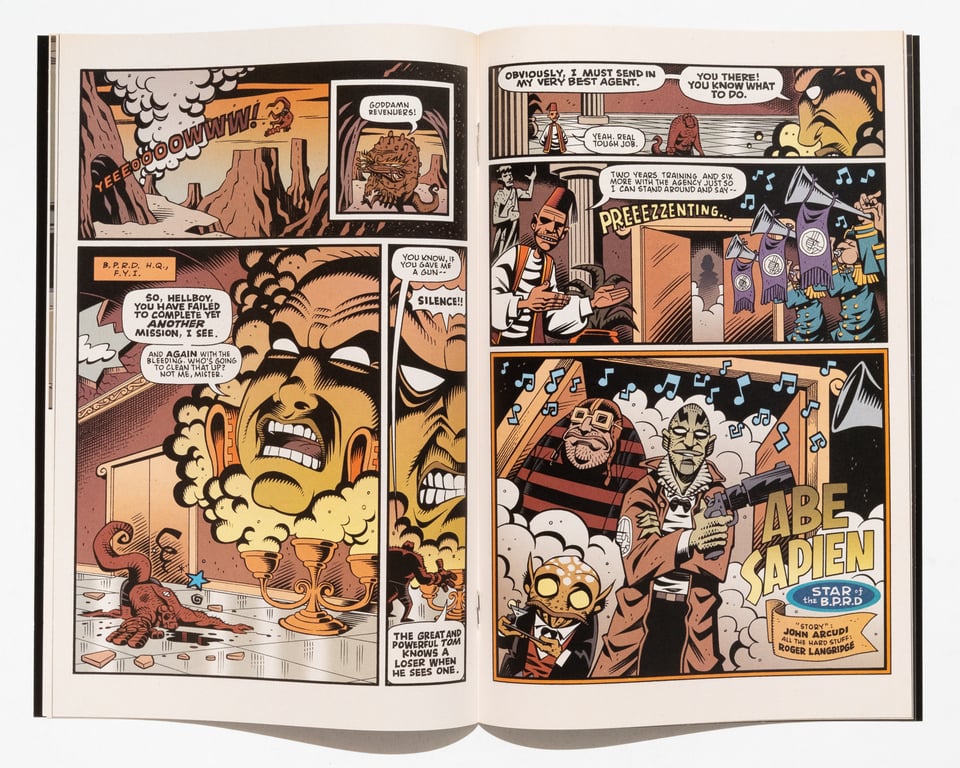
That story leapt off the page when I came across it, but I do not mean to disparage the other contributions (except for current Marvel Editor in Chief C.B. Cebulski’s contribution under his “Akira Yoshida” alias— that one sucks). In fact, one of the most interesting details about this series is how many artists seem to have been allowed to write their own material, and how much of it defined characters that had thus far been lacking. Jason Howard’s contribution for example, is an iconic Liz Sherman story, while John Cassaday is featured twice, once in the first issue working in a very recognizable Cassaday style and again serialized across all eight issues in a delightful homage to Sunday style adventure comics, drawn in a much freer style for Cassaday
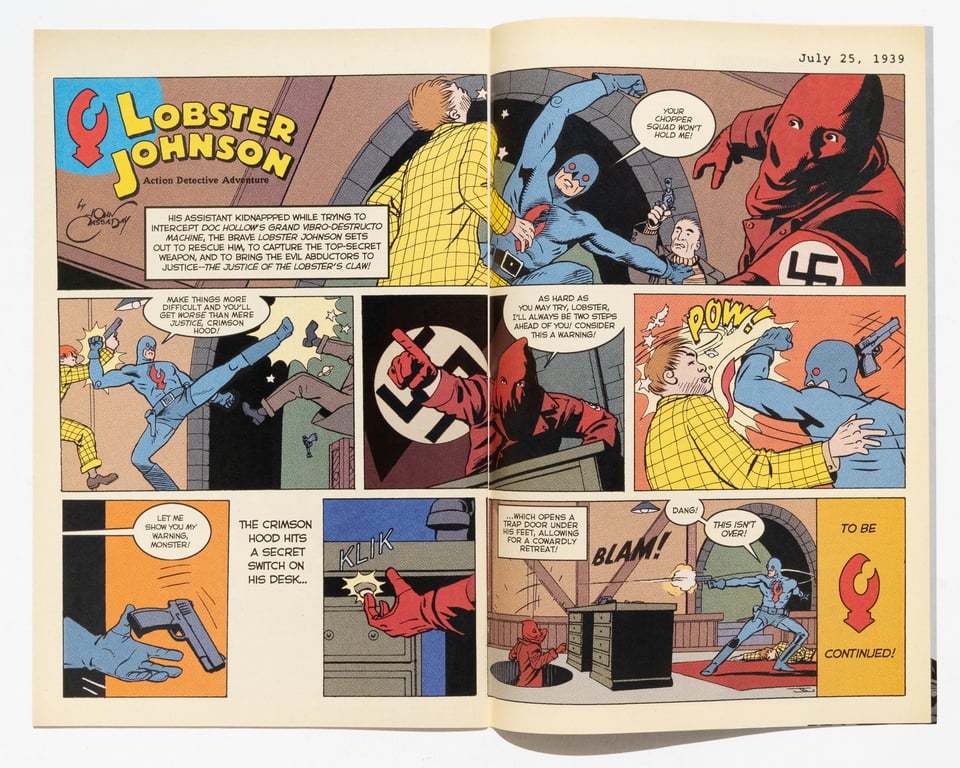
Condition is generally high but there is some variance between issues and definitely some blemishes. front and back covers for each issue are available on the shop listing.
CAPSULE REVIEWS

It’s horny, but the surprising thing is how faithful an adaptation of Stevenson’s original it appears to be. Pretty straightforward comic punctuated by full page BDSM orgies. Beautifully illustrated, and adds an interesting, logical element to the text.

A collection of short stories that ask the question “what if Dracula was a foppish dandy? beautiful watercolors.
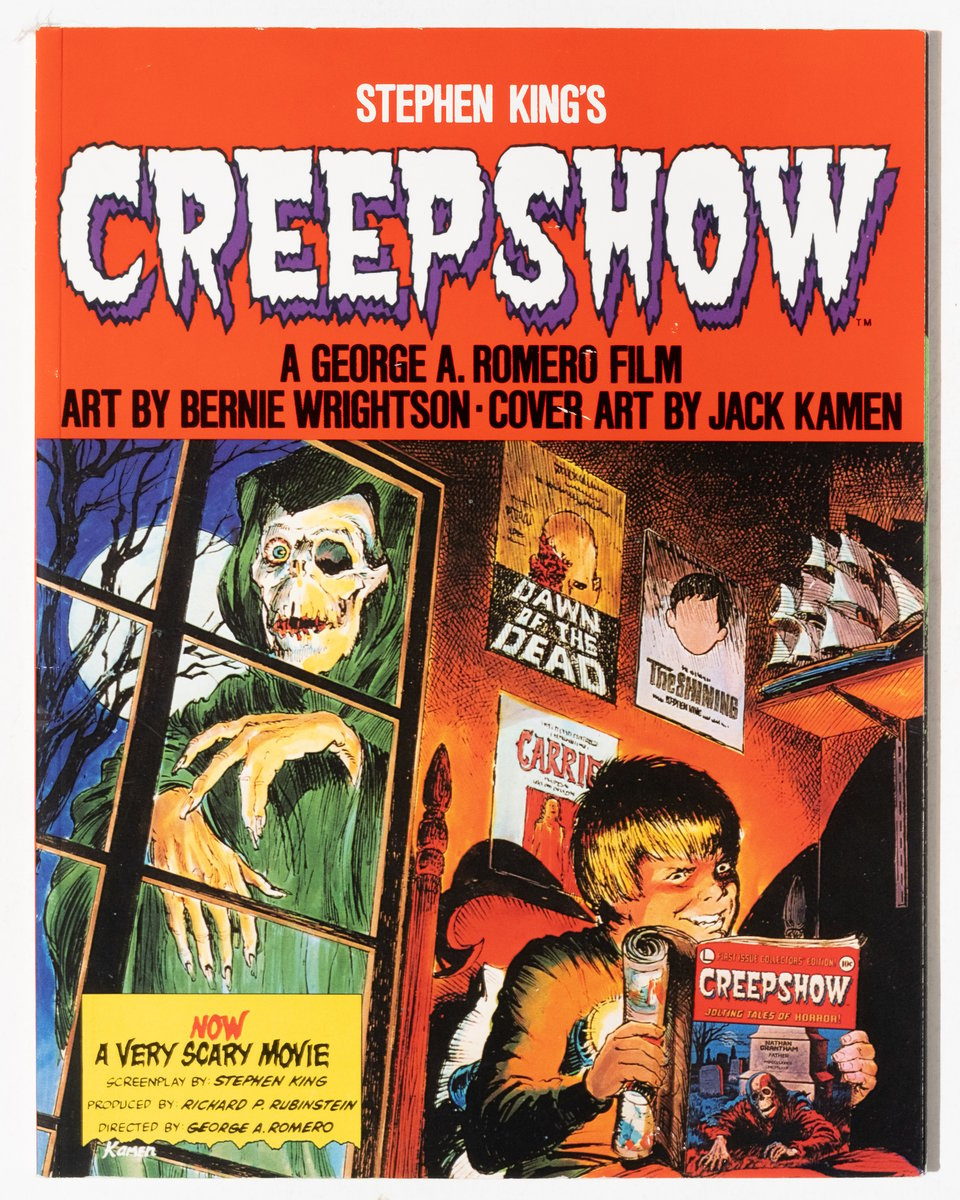
Another anthology! made to go along with the movie, but somebody smart hired Bernie Wrightson to draw the whole thing! this is a recent reprint on uncoated stock.
As always, direct links to these books (and more!) are available by clicking on the cover image. And if you do feel compelled to purchase something, don’t forget the coupon code SPOOKY at checkout!
Thank you I will be back next month where the theme is loosely “Vertigo minus Vertigo.”